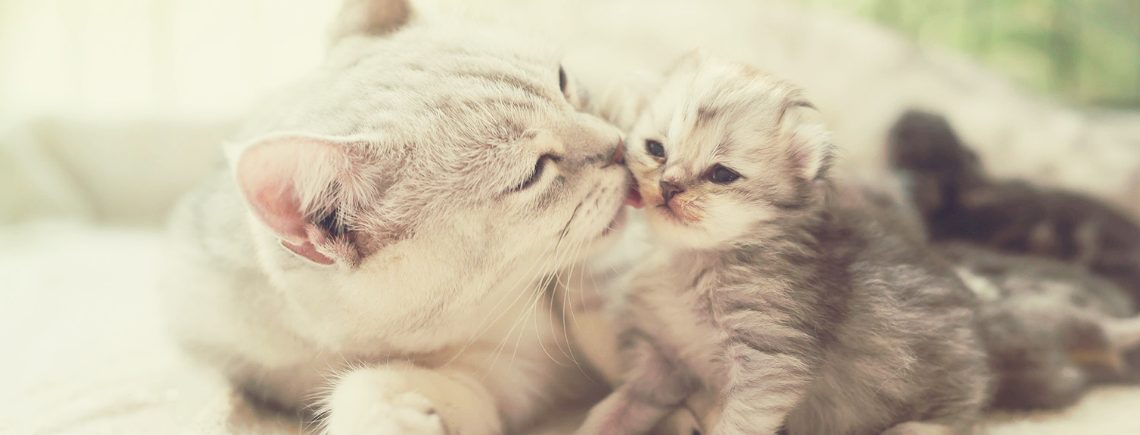My Cat Has Had Kittens-What Do I Do Now?
Most cat rescues and shelters advise the spaying/neutering of cats from as young an age as possible, as it is the only effective way to reduce the number of unwanted cats in Ireland. If you decide your cat is going to have a litter, it is essential you are prepared to support her healthcare throughout the pregnancy and have homes available for her kittens when they are weaned (6/8 weeks of age) when ready to leave your care.
In this blog post, you’ll find out how to take care of your cat after she has given birth, what you’ll need to look after her kittens, and what to consider when rehoming them.

Galway Cat Rescue
Galway Cat Rescue have partnered with Petmania Galway to help find local homes for cats in their care. They are an all-volunteer group of animal lovers that are committed to helping homeless cats in Galway, and dedicated to give every cat a chance to live a safe, healthy and happy life.
They operate using a network of fosterers who look after cats and kittens in their own homes. This provides the best possible opportunity for them to become well socialised in a normal domestic environment.
Galway Cat Rescue want cats to find a forever home in the shortest time-frame, and by adopting best practice adoption protocols and early age neuter/spay procedures, they can go to these homes directly from the invaluable socialising care a foster home provides.
For more on Galway Cat Rescue, visit their website here.
What To Do When Your Cat Goes Into Labour
Pregnancy lasts approximately 63-65 days – around nine weeks.
Cats who are due to give birth, called ‘queens’, normally pick out a suitable spot to do so themselves. This is known as ‘nesting’; they will scout around the house for a dark, quiet area, and once they have selected their spot, they will go there once they begin the birthing process.
You can help your cat by providing a box, clean sheets and a cosy blanket in some areas of the household your cat shows an interest in, such as under your bed.
Unless the cat seems to be having difficulty birthing her litter, she should generally be left alone in her chosen nesting area. It can take your cat from two to 24 hours to give birth, so make sure to check up on her every now and then. Keep an eye on the process, but keep your distance and never disturb her.
If you notice any issues, make sure to ask your veterinarian for advice on whether their direct intervention is needed.
What To Do After Birth
Warmth is very essential to new-born kittens, as they lose heat rapidly. Their mother may use her own body heat to keep her kittens warm, but if she is too tired or disturbed, she may ignore them, in which case the kittens will need heat from somewhere else. Keep them warm with a heat pad or a covered hot water bottle (no hotter than body temperature). The kittens should be covered with a light towel or blanket. Make sure the room temperature warm and the bedding clean and dry.
Looking After Your Cat
The queen will need to eat more than usual, especially during her last three to four weeks of pregnancy. She will require approximately 25 per cent more food. You should feed her kitten food in regular meals. This diet should continue through lactation, right up until the kittens are weaned – queens use up more than double their regular energy requirements when suckling kittens.
Always ensure your queen has access to plenty of water, both during pregnancy and after birth. Keep the water out of the kittens’ reach however; this is to avoid accidental drowning.

Looking After The Kittens
Kittens should remain with their mother until fully weaned. Weaning can begin from 5 weeks old. You can feed the kittens soft pâté food, and weaning kibble can be offered from this age.
This takes the pressure of full time feeding off the mother cat, and helps ease the transition process away from her nursing.
Usually kittens can be fully weaned by 8 weeks and this is generally the time to get the mother cat spayed to prevent her going into heat again.
For more on feeding your kitten, visit our blog post here.
Rehoming Process
Kittens should stay with their mother until they are at least 8 weeks old. Once it is time to rehome them, always ensure they are going to people you know and trust.
The best people to rehome your kittens to are people you know well, who can provide kittens with everything they need when they are young and when they grow into adult cats.
Any offers you receive for your kittens, you should home-check; this is to ensure the kittens are going to a suitable home. An ability to meet an unexpected vet bill is also very important, and vet references are a great reassuring extra check where possible.
Interested in finding out more about cats and kittens, or helping a cat in need? Visit galwaycatrescue.ie for everything you need to know about fostering, adopting and rescuing a cat or kitten.

